The global market for cloud-based applications is growing rapidly. In 2025 it is projected to reach $168 billion. Previously, the main drivers of cloud app development were enterprise-level companies. But today, this trend is shifting due to the attention of small and medium-sized businesses.
What is cloud app development? What is so special about it, and how can you move your organization to the cloud? You will find answers in today’s article.
What is a “cloud” in cloud app development?
In information technology, the “cloud” is the Internet. More precisely— it is a data center where you will find a collection of servers that perform a certain service. As a user, you access those servers (and the software those servers run) over the Internet. So whenever you hear something is “in the cloud” or “runs in the cloud,” – it is stored on the Internet (remote servers) instead of on-premise ones.
So what is a cloud application?
Any app consists of data and processing logic (code). Specifically, a cloud application is partly powered by the local components (code) and the cloud components (data). Therefore, to get the most out of such software, users need to have access to the Internet. Also, since the data (logic) for cloud applications is stored on remote servers, such a model ensures the application’s integrity, security, and uptime.
Cloud applications do not permanently reside on the device’s hardware—they can, but they are usually accessed through a web browser. Nonetheless, they can work offline, although the Internet is still needed for updating the application, data, and progress.
What about cloud app development?
Cloud application development comes under the umbrella of cloud computing services. More specifically, it is a process of building cloud-based apps. Thanks to this software development technology, you can store high volumes of data on third-party servers. The product of cloud app development is cloud-based apps that businesses can use, even though the app data is not stored locally but on external servers.
Cloud application characteristics
Based on the definition above, we can identify the following features of a cloud application:
- Data storage is split between the client and server. One part of the app’s data and processing logic is stored in the cloud, and the other is on a user’s device. This cloud app development model is user-friendly because it lowers the minimum requirements needed for devices to run the application.
- Entirely cloud-based data. It is possible to develop a cloud app that will consume almost no storage space on the user’s device.
- Access via browser or API. Users can access the cloud app via a laptop, mobile phone, or tablet. In other words, nearly any device you can connect to the Internet is suitable for a cloud app. Cloud apps use API (Application Programming Interface) or web browsers to “talk” to another software or device.
- Robust API integrations. Cloud apps can be connected to various third-party cloud computing services. This way, developing a cloud app with multiple features and an agnostic approach becomes easier.
When it comes to what is being exchanged between the client (user) and server (cloud) side and how it changes the user experience – it depends on the cloud computing model.

Popular cloud application models (with examples)
There are many approaches to cloud app development. We can distinguish several cloud app models across different industries depending on how the data is stored, managed, and secured. Let’s introduce them briefly.
SaaS (Software as a Service)
SaaS is a popular cloud model that delivers web applications along with the necessary infrastructure and platforms to users. The products of this form of cloud app development distribute data online, which users can access from a browser installed on any device. The main advantages of SaaS are the lowered costs and the subscription-based payment.
The first one means that users do not need to invest in robust on-premise IT infrastructure and its maintenance. The second one allows users to pay for software for as long as they continue using it instead of making huge, upfront “lifetime” payments.
Examples of SaaS include documents-related services like Google Suite and Microsoft Office 365. You will also find the products of cloud app development in enterprise-grade companies in human resource software, content management systems (CMS), and customer relationship management solutions (CRM).
Also, if you work remotely or in a distributed team, you probably use SaaS apps that help you communicate with your colleagues. For example, Slack and Zoom.

We build custom cloud-based solutions to suit every unique requirement. Are you interested? Get in touch with us for your free consultation with our expert.
PaaS (Platform as a Service)
In the case of PaaS, a service provider delivers a platform to users, so they can develop, run, and manage business applications over the cloud. PaaS is a cloud-based environment where developers can build and deploy their apps. To be more precise, this platform typically consists of the database, and operating system developers need for cloud app development.
The advantage of this cloud app model is that developers can focus on business logic instead of spending time on building and maintaining the necessary infrastructure. Popular PaaS examples include AWS Lambda, Heroku, SAP Cloud, and Windows Azure.
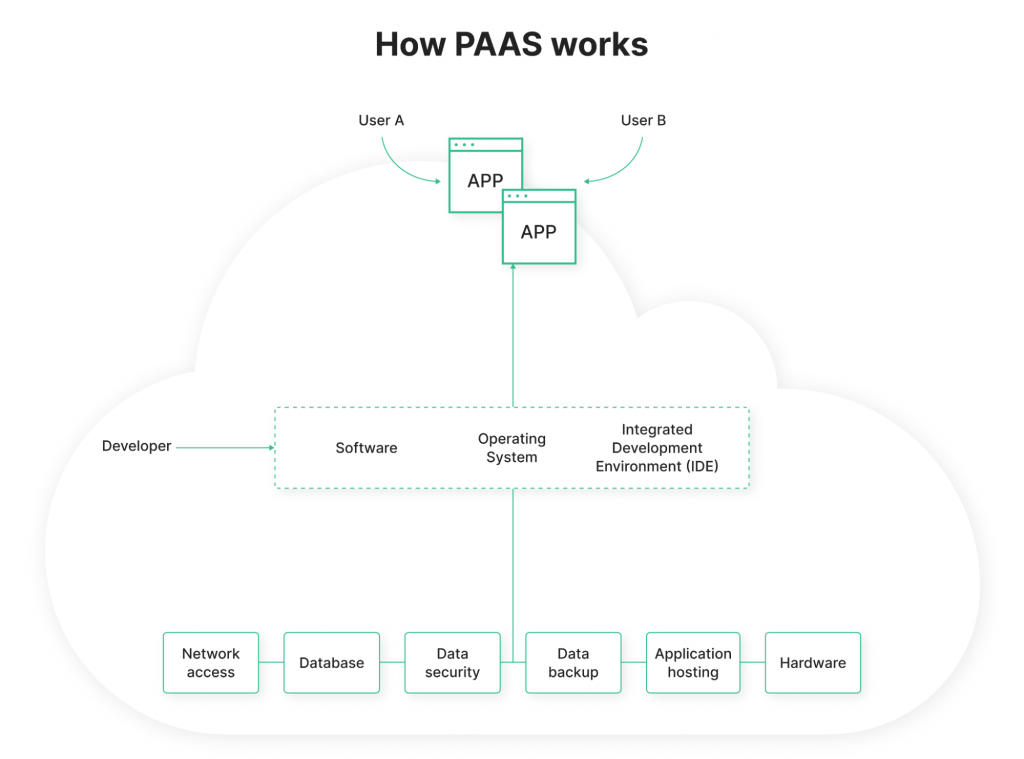
IaaS (Infrastructure as a Service)
IaaS means a provider manages your infrastructure — servers, network, operating systems, and storage — through virtualization technology. Users “rent” the entire infrastructure they need and access it through an API or dashboard. The arguably most significant benefit of such an approach is that it gives users complete control over the entire infrastructure without needing to maintain it physically. Among IaaS solutions, you can find Amazon Web Services (AWS), DigitalOcean, and Microsoft Cloud.
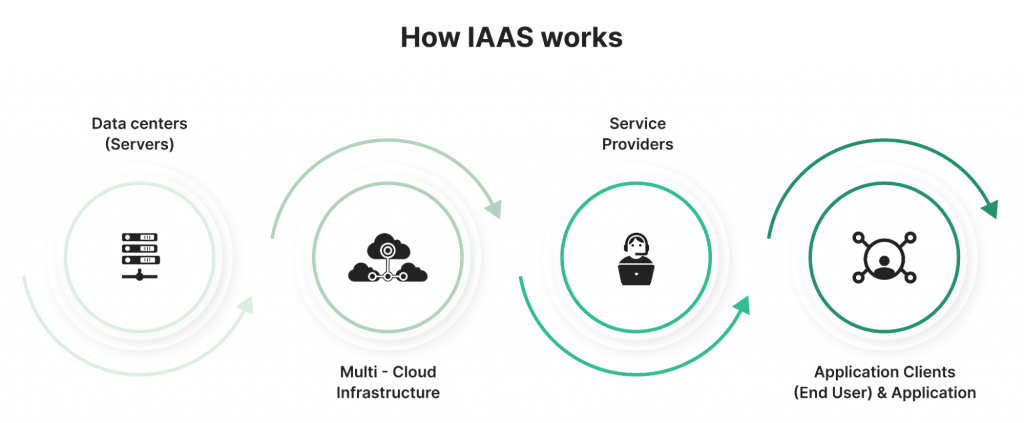
FaaS (Function as a Service)
FaaS breaks cloud applications into small components that only run when users need them. Imagine a modern mobile device that is packed with different sensors and functionalities. But you usually use only some of them simultaneously.
So whenever you need to call someone, you use the calling feature; if you want to know how fast your morning run was, you use your phone accelerometer and a GPS app. In other words, instead of using the whole device, you only use what you need at the given moment. Similarly, if you do not need to use any feature, you do not pay for it.
Among FaaS examples are Amazon’s AWS Lambda, Google Cloud Functions, IBM Cloud Functions, and Microsoft Azure Functions.
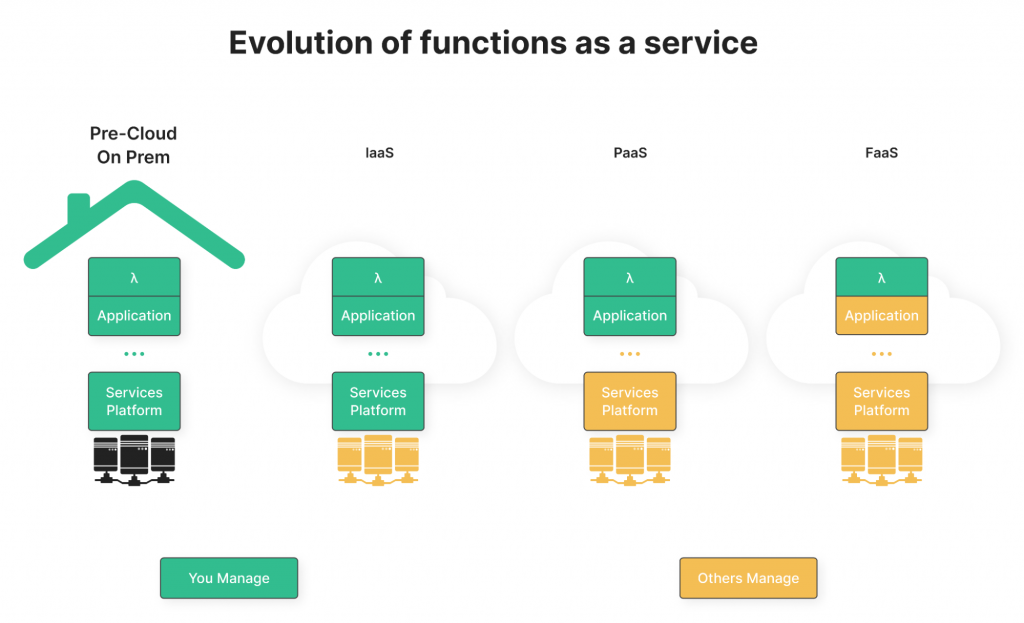
Main benefits of cloud application development
Every company wants to ensure its data is readily available and as secure as possible. Cloud app development deals with storing all data types conveniently and securely. It is a considerable advantage but only one of many. What else does cloud app development bring to the table?
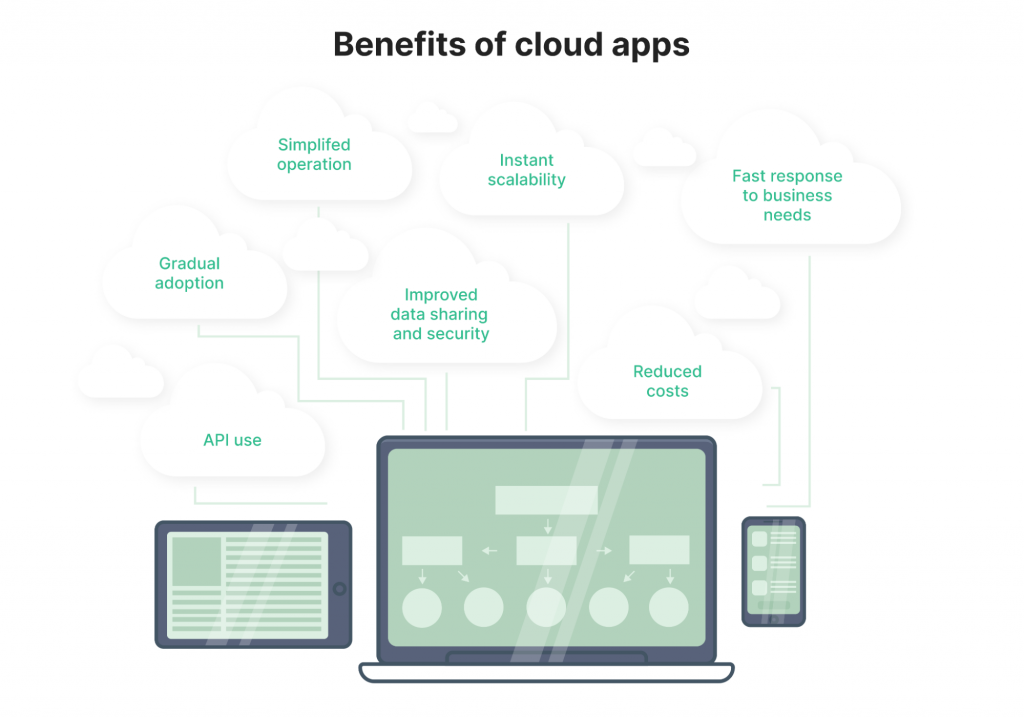
Cost-efficiency
One of the great things about cloud application development is its cost-efficient nature. Cloud-based applications do not need any upfront payments and robust on-premise infrastructure. The payments are usually tiered, giving you the flexibility to choose from several price plans that meet your needs in terms of storage and available features.
Simplification of work
Cloud-based solutions have replaced hardware-based solutions that could not handle the entire scaling process. The biggest problem for all the IT departments is that they must regularly purchase and configure new hardware and software to keep the infrastructure up to date.
Luckily, cloud app development can solve this issue. Cloud solutions give you access to different programs and files whenever you need them. This way, you no longer need to worry about constant and costly upgrades and work more efficiently.
Variety of service models
Each company is different in many ways. Therefore, a one-size solution is no longer practical. Cloud app development allows you to choose how you want to store your data, thanks to the variety of cloud service models. Each has its strengths and weaknesses, but you can mix-match two or three of them to get precisely what you need. But no matter your choice, you still retain complete control over your operations.
Customization and flexibility
Cloud apps are not stiff monoliths that recognize only the company of their own. Quite the contrary. Thanks to API, you can integrate a cloud app with multiple other applications to extend its capabilities. For example, you can connect Slack to Google Calendar to receive reminders about upcoming meetings. You can add and delete dozens of apps based on your needs.
How to create a cloud application for your business
Developing cloud apps differs from creating a web or mobile application. A mobile app development team builds a cloud solution based on your chosen service provider (e.g., AWS). But before you start development, you need to have at least a general understanding of what cloud app development entails.
#1 Market research
You must first consider the target audience when developing a cloud-based mobile app. The key is to understand your users’ needs and pain points. Try to find out as much as you can about your potential users. Only then will you be able to develop a cloud-based solution that will solve your users’ problems.
#2 Development team
When you identify your audience and their needs, the next thing to do is find a dedicated software development team to build a cloud app. Indeed, you can create your team from the ground up if you still need to get such in your organization. However, if this is a one-time project or you have a limited budget, consider outsourcing your cloud app project to an experienced team.
An outsourced partner will help you with business analysis, estimate costs, and walk you through the cloud app development process. The last one might be crucial if you have no experience with app development and need professional guidance.
Are you planning to develop a cloud app for your business? We will turn your ideas into robust solutions.
#3 App architecture, service model, and features
This step is quite tech-intense. At this point, you need to make several decisions. First, you pick the service model for your cloud app. Whether you go for SaaS, PaaS, or IaaS, the model should match the cloud solution you want to develop. You also decide on the architecture (e.g., microservices) and features to help your users succeed.
#4 Tech stack
You still need to finish the technicalities. Opting for a tech stack means choosing solutions for your app and data (e.g., ClearDB for storing data); DevOps tools (e.g., Jenkins for CI/CD development); utilities that enhance application; and a variety of side tools that are not strictly related to coding but the sheer processes (e.g., Jira for project management and UXPin for wireframes design).
Again, it is best to consult this step with relevant experts with the necessary knowledge and experience to help you make informed choices.
#5 Monetization model
Knowing your users’ profiles, you should be able to predict what your users are willing to pay for and how. One of the ways to pay for your cloud app is a one-time payment. If the app is relatively simple but helpful, your users prefer to pay for it only once.
Apart from that, you can offer them a freemium model which allows them to download the app and use basic features. They can upgrade to the premium version or proceed with the in-app purchase for more advanced and exciting features. The latter usually gives cloud app users more freedom to pay only for features they want to use.
And finally, your app can display ads. The advertisers will get charged every time your users click on the ad. Alternatively, you can offer users to pay to remove ads from their sight.
#6 MVP
Software development, whether web or mobile app development, is complex, and cloud apps are no exception. An MVP (Most Viable Product) will help you test your app’s (in its incomplete form) technical and business performance. Think of it as testing waters — you send your app to the sea of your audience to collect their feedback and improve your app.
This way, you do not waste your time, budget, and resources to create a complete, robust app without knowing first whether this is really what your users want.
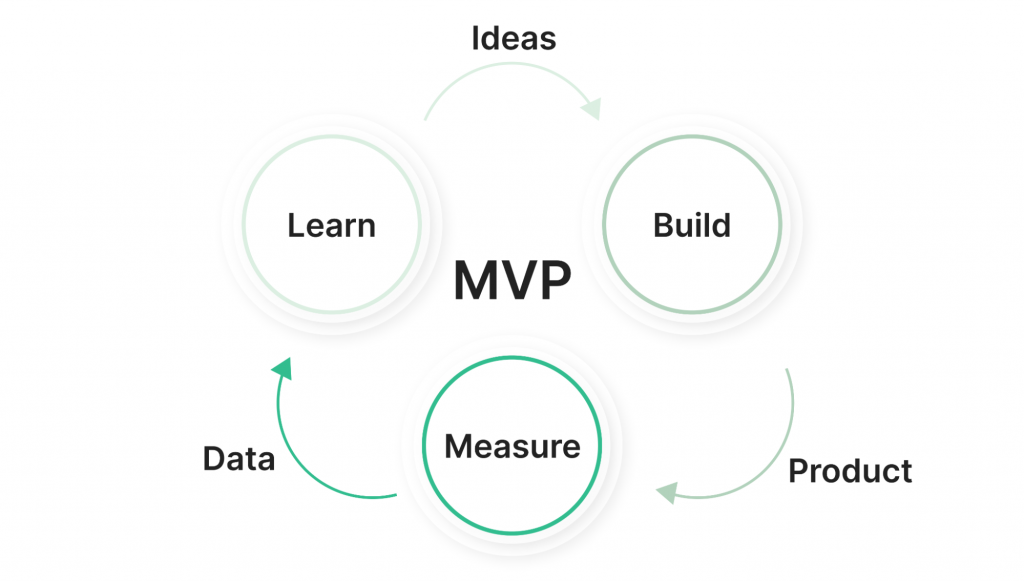
#7 Tests, launch, and maintenance
The Cloud app development process should also include QA (Quality Assurance). In other words, before launching your product, your software testing team has to test it to find any bugs. But bugs are not everything.
The testing stage also checks whether the cloud app meets business requirements. In other words, it has all the features and works as intended per your project requirements. Verifying that your application provides a satisfying user experience is also essential.
When your cloud app is good to go, the development team launches it and carries out regular maintenance work. The role of the implementation is twofold. First, it keeps the application up to date, which is paramount to security and user experience. And two, it is to implement improvements based on user feedback.
Summary
Cloud app development is a relatively long and complex endeavor. But with the right team on your side, your app can become successful and bring a lot of value to your users (and, of course, to you). At IDAP, we specialize in software development, including cloud-based solutions.
At every stage of the SDLC, you can count on our help. We offer end-to-end development services in the spirit of Agile practices and strive to make impossible ideas possible. If you are thinking about cloud app development but are unsure where to start, contact us and learn more about how we can turn your idea into a powerful solution.



